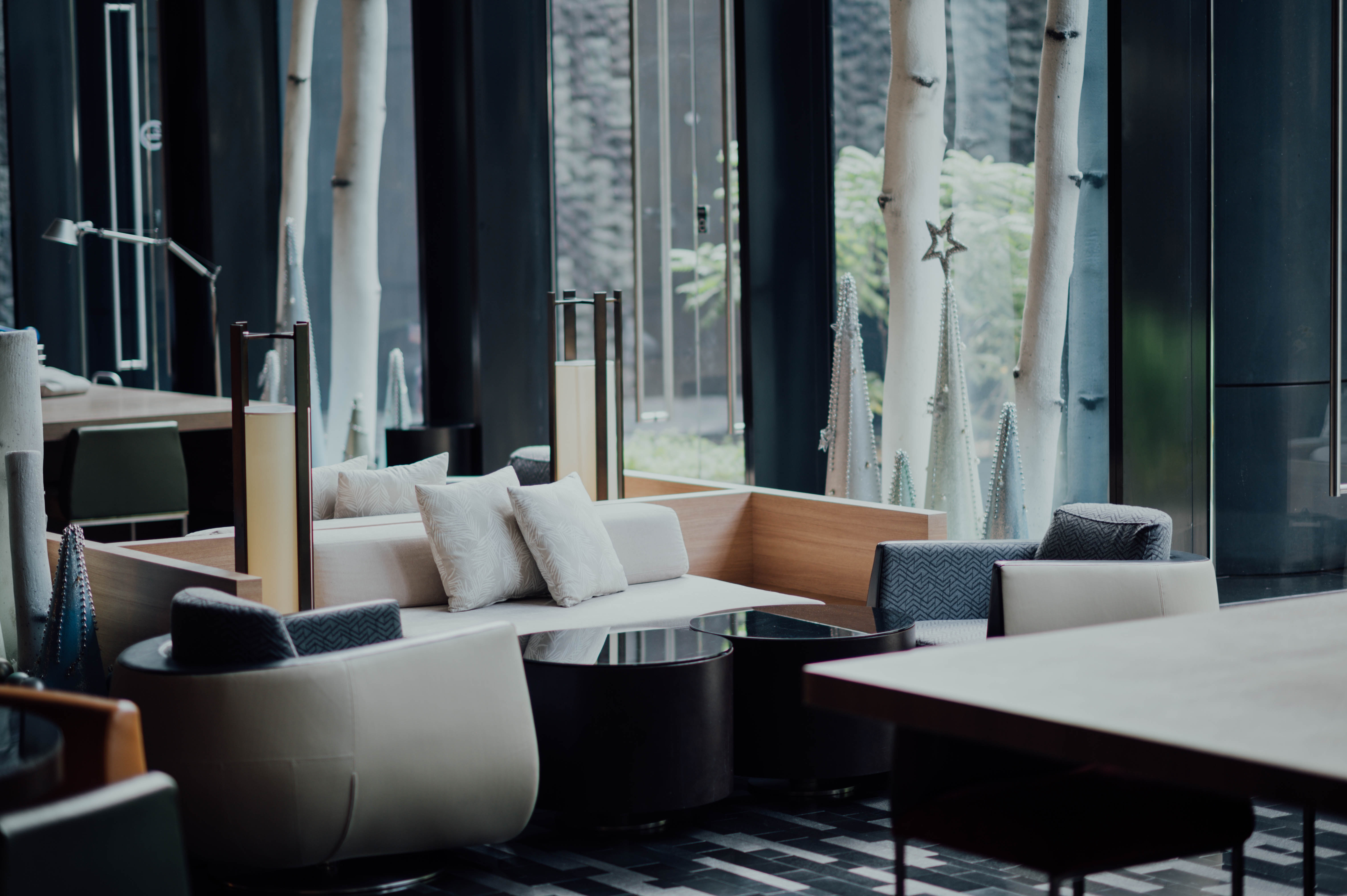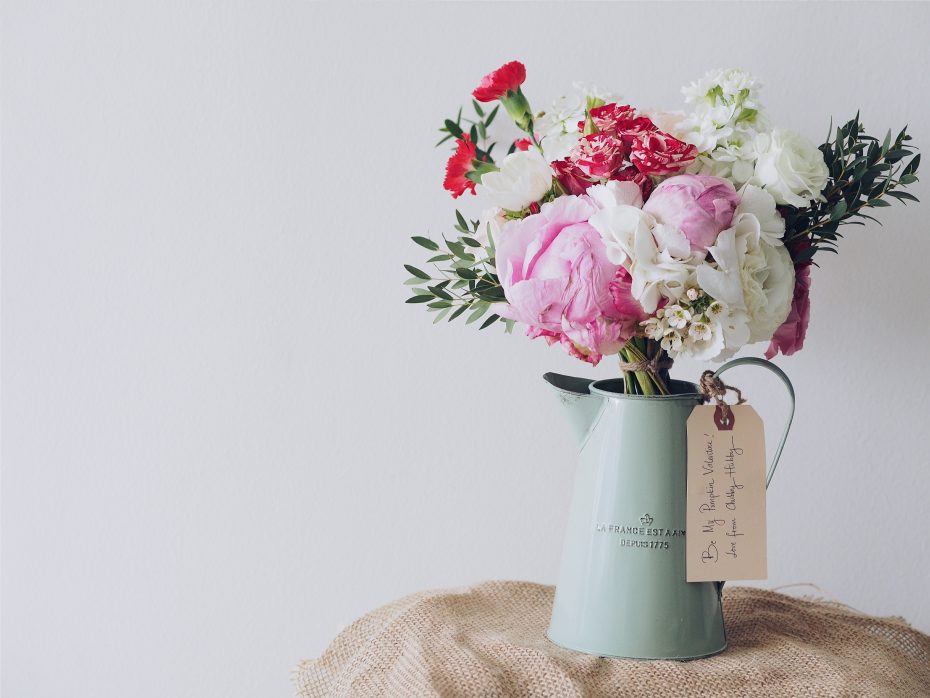If your company is like most, it has a significant marketing budget. Each year, managers spend thousands of dollars on marketing tactics designed to promote the business.
These efforts aim to clarify your company’s purpose, values, and solutions. They give potential customers and partners an idea of what to expect.
However, many companies overlook one of the simplest ways to make a good impression: their physical office — and their reception area, in particular.
The reception area is one of the first things visitors personally experience in connection to your company. It “sets the tone” for all office visits. If people get a bad impression when they walk through the door, they’ll probably expect and look for incompetence in other areas, too. (For more on the importance of first impressions and “self-fulfilling feedback loops,” check out our article Why Your Company Might Need a “Director of First Impressions”.)
Although most companies make some effort to ensure their lobby looks good, they fail to take advantage of making an impression on the other senses.
That’s a big missed opportunity. Integrating other sensory elements into the lobby can be an easy, affordable way to cement your brand into visitors’ minds.
Introducing Sensory Marketing
Of course, when most people think about marketing and branding, they think of what they can see. Display ads, logos, and websites all rely on the eyes. When you walk into a room, for example, you take in things like its light, its colors, the art on the walls, and even how the receptionist is dressed, all with your eyes.
However, marketers are increasingly exploring how impressions from all of the senses interact with one another to enhance experiences.
In this Harvard Business Review article, sensory marketing expert Aradhna Krishna, director of the Sensory Marketing Laboratory at the University of Michigan, notes that companies are just beginning to recognize how strongly the other senses affect “the deepest parts of our brains.” When different senses receive similar signals, the impressions are enhanced. For example, a heating pad might feel warmer when it smells like cinnamon, a flavor that’s also associated with warmth.
The fact that these enhanced cues are so subtle and even subconscious can make them even more effective. Consumers don’t think of them as “marketing,” so they don’t view them with the usual level of skepticism.
The reception area is an ideal place to take advantage of sensory marketing tactics, such as the following.
Fragrance
The sense of smell may be especially effective when it comes to connecting an experience to our memory and emotions.
That’s because smell signals actually go directly to that part of our brains. As this Psychology Today piece sums up, the signals from all of our other senses are sent to the thalamus first, then sent to the other parts of the brain for processing. However, our olfactory bulbs send “smell signals” directly to the amygdala and hippocampus, which are responsible for processing emotion and memory.
You can probably think of a time when a certain scent brought back long-forgotten memories vividly. That brain wiring might be the reason why.
Some companies are leveraging the power of scent in marketing. For example, some hotels and retailers have created signature scents for their establishments and infuse that scent in the air when visitors walk in.
But you don’t need to hire a perfumer to leverage the power of scent for your lobby.

For example, it’s generally understood that citrus scents are energizing, and certain herbal scents like lavender have a calming effect. Don’t limit yourself to the grocery-store-bought synthetic air fresheners. Try boutique fragrances, or experiment with essential oil blends in sprays or diffusers.
Ask your lobby staff what fragrances they prefer or fits with the company’s style. If the smell is overpowering, off-brand, or if visitors don’t like it, your branding efforts will backfire.
Finally, consider how the objects within the lobby affect how it smells. Plants can affect the air quality, for example, and wood and leather furniture can give off a pleasant aroma. Similarly, if you expect or allow your front desk staff to eat their lunch at their front desk, you can expect that it will affect the way it smells, too.
Acoustics
Anyone who has arrived at a party early and found it awkwardly silent knows firsthand the benefits of pleasant, carefully chosen music.
Getting the appropriate licenses for your business to stream music used to be expensive, but these days, some popular streaming services have entered the marketplace.
Even if music isn’t appropriate for your office, you can still pay attention to the acoustics in the lobby.
For example, you may be able to minimize echoes by adding furniture, window dressings or floor coverings. If you’re next to a busy road or another source of noise pollution, explore soundproofing options such as reinforced windows, or even working with a soundproofing professional. (A soundproof lobby can also have privacy benefits, as we mentioned in our post 6 Best Visitor Management Practices for Therapy Clinics.)
Another pleasant way to enhance acoustics is with a water feature, especially if your goal is to create a calming experience for visitors. Anything from a small desktop fountain to a statement-making “living wall” with a built-in water feature can do the trick.
Textures
Reception area furniture can make an important impression visually. But it also affects how your visitors will “feel” when they settle in to begin their waiting period.
Furniture that was designed for high traffic doesn’t always prioritize comfort, and a sense of comfort might be particularly important if you want to establish a sense or luxury or put visitors at ease.
On the other hand, if you’re going for a modern, professional vibe, you might prioritize gleaming surfaces and sharp angles instead of comfy arm chairs.

Either way, the way your furniture feels should be consistent with the other signals you’re sending in the reception area.
Sensory marketing may also take other tactile details into account. How does the door handle feel in your hand when you pull the door open? (Luxury automakers spend a lot of time considering just that question, by the way.) What about when visitors pick up the pen to sign in? Consider the subconscious message it sends if they pick up a lightweight, plastic clickable pen versus a heavier, more expensive pen with a cap — or even better, a tablet-based digital check-in system like The Receptionist.
Tastes
Offering refreshments to office visitors in the lobby isn’t feasible for every business. But it also doesn’t have to be complicated.
Keep it simple with a bowl of high-quality candies or mints, or a small selection of drinks, such as coffee, tea or filtered water. A few simple “signature” drinks (i.e., water infused with lemon, lime, or cucumber) can also enhance the impression you’re trying to make. Some businesses may choose to make a simple “self service” station near the reception desk so visitors can enjoy a beverage while they wait with no need for staff to get involved.
Final Thoughts
Before researching signature drinks and fragrances for your lobby, you’ll need to clarify your priorities. Decide how you want visitors to feel when they walk into your office. Then work hard to make those feelings a reality. #receptionistapp Click To Tweet
As we go over in our post 5 Ways to Style a Beautiful Reception Area, your primary aim might be to reassure visitors or impress them (a legal office), or to energize and excite visitors (such as in a startup or design firm). Once you know your goal, you can align each sensory experience accordingly.
Regardless of which tactics you use, never underestimate the power of a first impression.
Finally, if you are looking for a powerful way to upgrade the entire visitor management experience, it’s time to give visitor management software a try. The best programs do much more than just digitize the visitor log. They automate the entire check-in workflow and even allow visitors to communicate with their hosts directly through the check-in tablet. Click here to see the features for yourself with a free, personalized demo.
Share this Post

